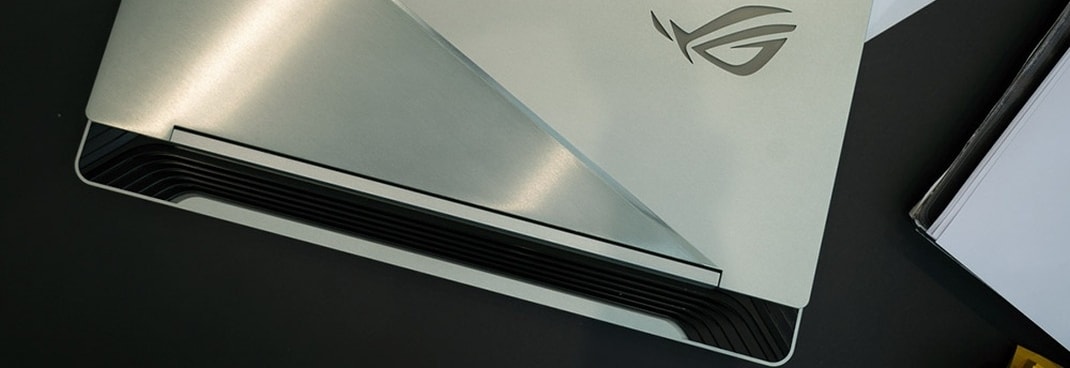If you’ve made up your mind on buying your next laptop, you’ve probably decided on a budget. If you are spending anywhere near Rs. 50,000 for it, you would expect it to perform. We are sure you have read a bunch of articles, gone through forums and websites that suggested all kinds of models with all kinds of specifications. Most of these might run office software such as Tally, SAP, designing software like CorelDRAW and even popular games such as Fortnite or Playerunknown’s Battlegrounds just fine.
That’s adequate performance, but shouldn’t you be getting the best performance after having spent so much?
Buying a laptop priced near Rs. 50,000 can be tricky. A lot of laptops in this range are equipped with components similar lower priced models. For example, a laptop priced at Rs. 35,000 may have a low-resolution screen or smaller storage drives. A more expensive laptop may still have the same Intel Core i3 processor as a Rs. 35,000 laptop. So when you spend Rs. 45,000 and more, you pay more for features, than performance. Sometimes you might find a higher-spec processor, but technically, it would still be an entry-level processor. The performance gain between the models minimal, if you aren’t careful.
What if we tell you that, extending your budget just that little bit gets you that hurdle, and fetches you a powerful laptop? It’s not only a faster processor, but many more features and components. Wondering what we’re talking about? Allow us to explain.
Keeping graphics card a priority more important than you think

A lot of people live with the assumption that graphics cards are just for gamers, and the key to unlock faster performance is just a good processor. Of course, processors are important, but having a graphics card can help a CPU deliver a superior performance.
Every processor is designed to handle some basic 2D and 3D graphics. However, a graphics card is specially designed to handle complex 2D and 3D tasks. Having one can help improve the overall laptop performance by a lot. Think of a graphics card as a boost to your CPU; they process complex graphic tasks, reducing the load on the CPU by a lot. This means, your CPU can handle other more important tasks and multi-task better. In fact, graphics cards also improves performance of video editing and 3D modelling software which means, smoother designing and faster render times using Adobe Premiere Pro, Autodesk 3D Max, Cinema 4D and more.
Today, most mid-range laptops sport latest generation NVIDIA and AMD graphics cards. Such laptops deliver significantly higher performance than entry-level laptops. In fact, mid-range laptops are also great for gaming. They let you can play popular games such as Fortnite and GTA V by turning on high texture and model quality, anti-aliasing and motion-blurring setting.
More RAM can better performance

RAM is one of the most important components on your laptop. The overall performance of the laptop depends on how well the RAM and CPU work together. Remember, the more RAM a laptop has, the more it helps the CPU performance. However, laptops priced between Rs. 40,000 and 50,000 can sport 4GB of RAM. Yes, 4GB is enough for internet browsing and video streaming from Netflix and YouTube, but you would expect more after spending so much, right?
Every software needs some RAM to run and once the laptop is short of it, software either runs slow or brings the laptop to a halt. Expanding your budget a bit over Rs. 50,000 can fetch you a laptop that comes built with 8GB of RAM. The additional RAM can translate into better performance and should deliver solid multi-tasking abilities especially while working on large projects and switching between software. Similarly, rendering projects on software such as Adobe After Effects, Autodesk Maya, Sketchup is faster with more RAM. More RAM also helps gaming and that’s the reason most gaming laptops come with at least 8 GB of RAM.
Some laptops also allow you to upgrade the RAM up to 16 or 32GB. It’s important that upgrading the RAM may void your laptop manufacturer’s warranty. To know more upgrading RAM, do check our article.
Aesthetics can also improve functionality

Design may not concern buyers with a budget, but when you are spending close to Rs. 50,000, it should be on your priority list. Most laptops between Rs. 40,000 to 50,000 are thick and sometimes look boring. Their bulkiness is noticeable and the weight makes them inconvenient to carry around.
Most mid-range laptops come with a premium design and are also lightweight. This makes them quite easy to carry around, so you can pack them in your office bag and commute without straining your hands or shoulder. It’s not just that, many mid-range laptops come with a premium aluminium finish, so they get a lot of attention whether you’re at the airports, a café or even in a meeting room. By expanding your budget, you can also go for a convertible laptop with a touch-screen. These laptops are more portable and can be also used as a tablet. They are ideal if you want to use the laptop like a tablet, by folding them or by detaching the keyboard.
Most mid-range laptops also get larger trackpads and even LED back-lit keyboards. A larger trackpad means you can allow your wrist to rest in a more natural position and cover more screen area in a single swipe. Similarly, a backlit keyboard helps a lot for typing in the dark. Some models may have customizable features that let you adjust the intensity and colour of the backlighting.
Solid is just a state, performance is its nature

Most of us decide on a laptop with a larger storage capacity to store more and more data. Every other laptop between Rs 40,000 to Rs. 50,000 is equipped with a hard disk drive (HDD). Hard disks are a good way to store a lot of data, but have read and write speed ranging from 20 to 125 MB/s. However, solid-state drives (SSDs) can be as much as 10 times faster than everyday hard drives.
One of the major noticeable differences with an SSD is the boot up time. Where a laptop with a hard disk drive takes 35 to 50 seconds to boot, a laptop with an SSD can boot in well 20 seconds. As SSDs have higher read and write speeds, you can make large data transfer in seconds. In fact, SSDs also help to improve gaming performance, as you’ll get faster load times so you spend more time playing rather than waiting for the title to load.
SSDs are also more durable as they don’t have moving parts like HDDs. They produce no noise, consume little power and generate very little heat; this makes them reliable as well. This also helps in improving the laptop’s battery life. SSDs are making their way into laptops in a big way, and to know more check out our article – The Future of Storage is Solid-state.
Don’t forget what connectivity features you get

A few of us pay attention to the connectivity front while choosing a laptop. However, going for the latest connectivity features can do a lot more for you than you think. Crossing the Rs. 50,000 price bracket gets you a laptop with a Thunderbolt 3 port. This port lets you connect two 4K monitors operating at 60 Hz. Of course, your monitor needs to be Thunderbolt-enabled and this is particularly useful if you are a video editor working on long video timelines. If fact, Thunderbolt 3 also lets you connect an external GPU using compatible docks. This should let you convert your mid-range laptop into a powerful gaming machine, however such GPUs are not easily available in India yet.
Most mid-range laptops also come with an USB-type C port which have their own set of advantages. They are reversible, so they plug in either way. Secondly, they are faster, supporting data transfer up to 10 Gbps. Moreover, USB-type C ports also double up as a charging port in some laptop models. In fact, you can also connect older ports such as DisplayPort, VGA and Ethernet using compatible adaptors.
If you want to learn more, read our article that help simplify all your connectivity conundrums.
Yes, Rs. 50,000 is a good price to buy a laptop, however you may not always find all the latest features even after spending so much. Paying a bit more over Rs. 50,000 makes more sense as you get a laptop using the latest generation of hardware, and more importantly, having the satisfaction of now owning a futureproof machine. If you are wondering where to find such laptops, head on over to www.reliancedigital.in to explore our laptop catalogue. You can also visit your nearest Reliance Digital store to explore wide range of latest laptops.



